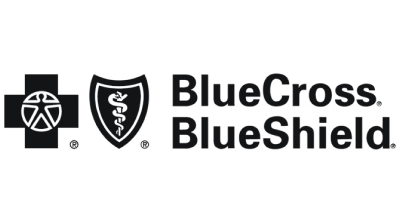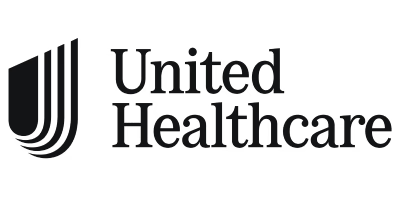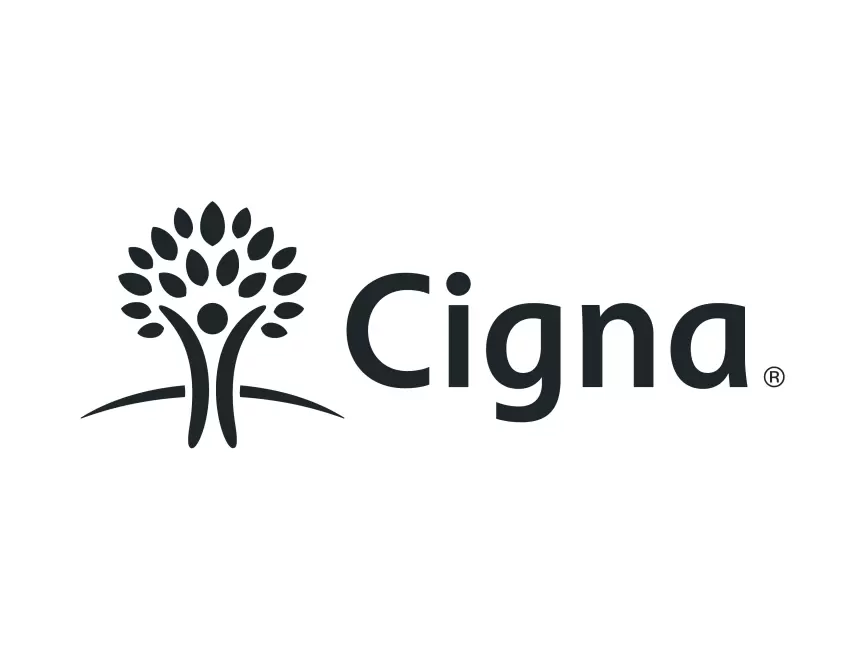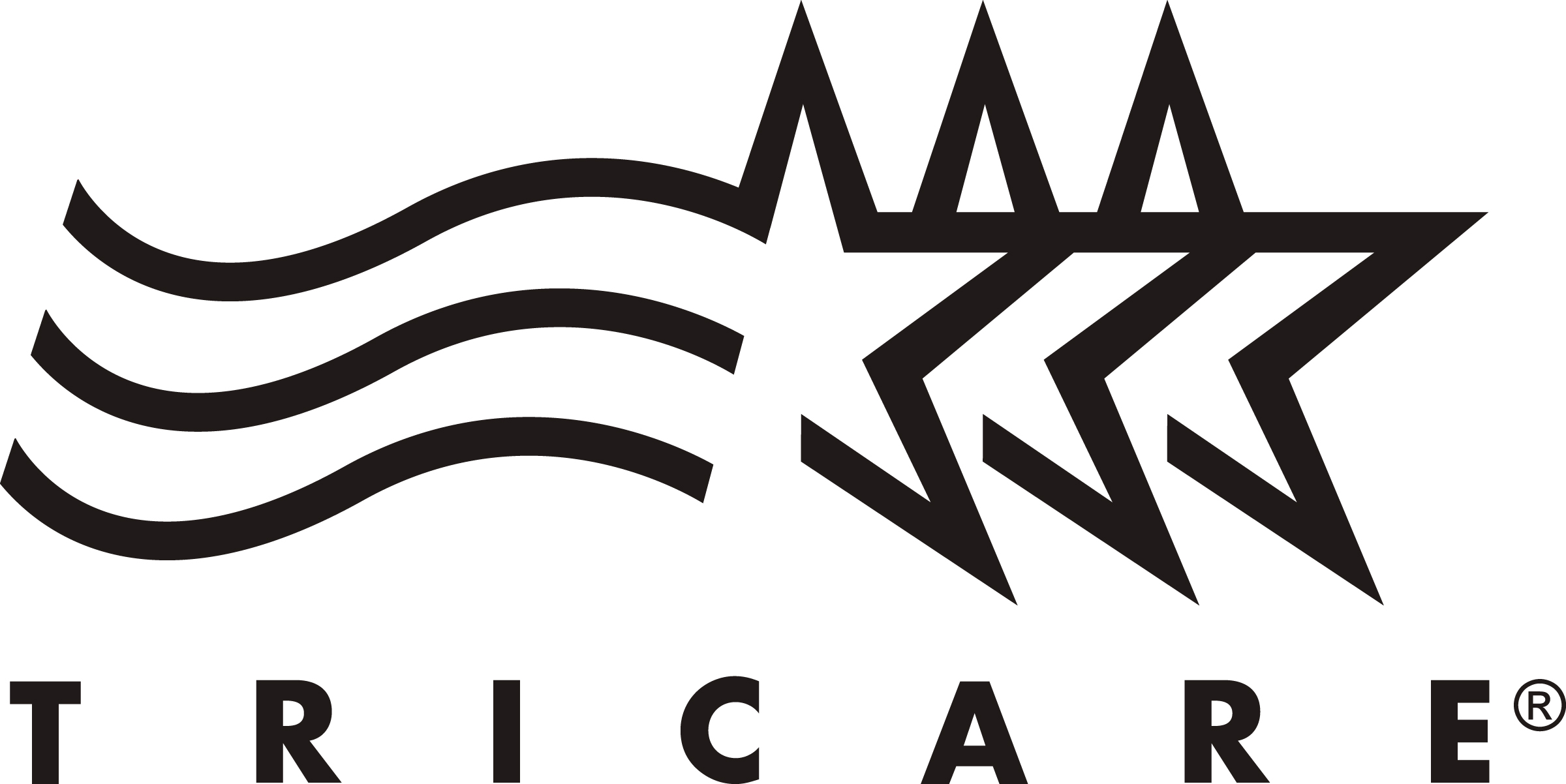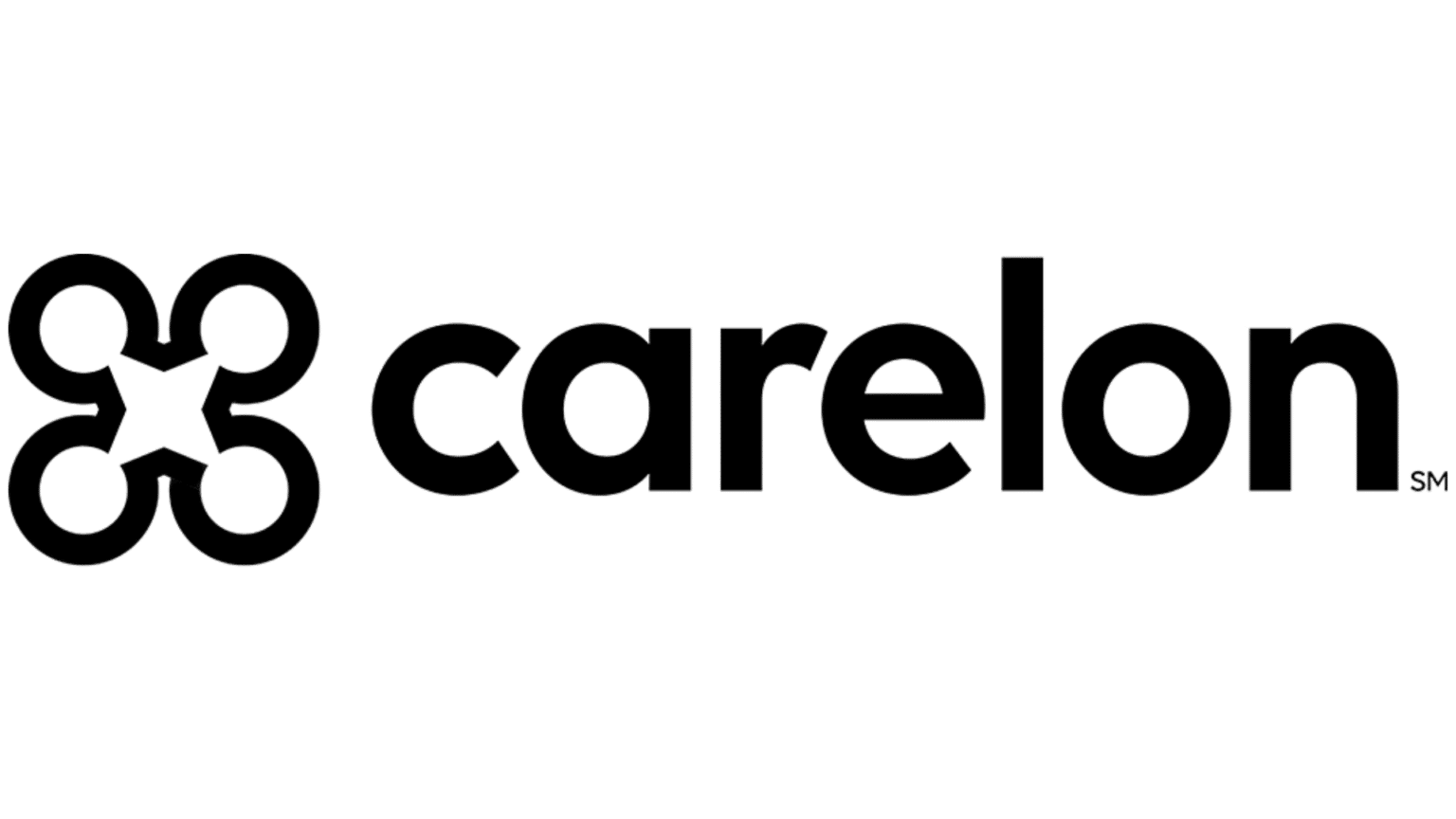Defining Luxury Drug Rehab: What Does It Entail?
The concept of “luxury drug rehab” in California often signifies more than just standard addiction treatment; it implies an experience designed to be as comfortable and stress-free as possible, allowing individuals to focus entirely on their healing journey. These facilities distinguish themselves through a combination of high-end amenities, personalized services, and an environment that often resembles a high-end resort or boutique hotel rather than a clinical institution.
Characteristics of Luxury Rehab Centers:
- Premium Accommodations: Private rooms and suites, high-quality linens, designer furnishings, and ensuite bathrooms are common. The living spaces are crafted for comfort and tranquility.
- Gourmet Dining: Professional chefs often prepare nutritious and delicious meals, catering to individual dietary needs and preferences. Dining is usually an experience in itself, contributing to overall well-being.
- Exclusive Amenities: These can range widely and may include swimming pools, state-of-the-art fitness centers, spas offering massages and other wellness treatments, yoga and meditation studios, and sometimes even features like movie theaters or golf courses.
- Holistic and Complementary Therapies: Beyond traditional evidence-based therapies like Cognitive Behavioral Therapy (CBT) or Dialectical Behavior Therapy (DBT), luxury centers frequently offer a broad array of complementary treatments. These might include equine therapy, art therapy, music therapy, acupuncture, mindfulness training, and adventure therapy. The goal is to treat the whole person—mind, body, and spirit.
- High Staff-to-Client Ratio: A lower number of clients per staff member generally allows for more individualized attention, personalized treatment planning, and readily available support.
- Enhanced Privacy and Confidentiality: Many individuals, particularly high-profile clients or professionals, seek luxury rehab for the heightened level of privacy and discretion these centers can offer. Secluded locations and stringent confidentiality protocols are key features.
- Scenic and Serene Locations: Often situated in beautiful, peaceful settings like coastal areas, mountains, or secluded estates, the environment itself is considered a therapeutic component, promoting relaxation and introspection. California, with its diverse geography, is home to many such idyllically located centers.
Benefits of Luxury Rehab:
The primary allure of luxury rehab lies in its ability to remove external stressors and provide an exceptionally supportive and comfortable environment. For some, this can make the challenging process of early recovery feel less daunting. The benefits can include:
- Increased Comfort: A comfortable setting can make it easier for individuals to commit to and remain in treatment, especially if they are accustomed to a certain standard of living.
- Personalized Care: With more resources and staff, treatment plans can often be highly tailored to individual needs, preferences, and co-occurring conditions. This includes more one-on-one therapy sessions.
- Focus on Overall Well-being: The emphasis on holistic therapies and wellness activities helps individuals develop healthy coping mechanisms and lifestyle habits that can support long-term sobriety.
- Reduced Stigma (for some): For individuals concerned about the stigma associated with traditional rehab facilities, the resort-like atmosphere of a luxury center might feel more acceptable or appealing.
- Networking with Peers: While not a primary goal, some individuals find value in connecting with peers from similar backgrounds or professional fields who are also navigating recovery.
California is particularly renowned for its concentration of luxury drug rehab centers, attracting individuals from across the country and even internationally. These facilities leverage the state’s desirable climate and scenic landscapes to create an appealing recovery destination. While these centers offer an impressive array of services, it’s vital to remember that the “luxury” aspect primarily pertains to the amenities and environment. The core of effective treatment—skilled therapists, evidence-based practices, and a comprehensive aftercare plan—should be present regardless of the price point. If you are exploring options, it’s important to look beyond the surface and inquire about the therapeutic modalities used and the qualifications of the staff. You can Admissions Information page for insights into what to look for in any quality program.
The Financial Reality of Luxury Rehab
While the allure of a luxury drug rehab in California is undeniable, the financial commitment required is a significant factor that cannot be overlooked. The high cost of these programs places them out of reach for many individuals and families seeking help for addiction. Understanding what contributes to these expenses and how they compare to other treatment options is essential for making a realistic and sustainable choice for recovery.
Factors Contributing to the High Cost of Luxury Rehab:
Several elements combine to drive up the price of luxury rehabilitation services:
- Prime Real Estate and Upkeep: Luxury facilities are often located in exclusive areas with high property values, such as beachfronts, secluded hillsides, or sprawling estates. The maintenance of these large, well-appointed properties, including landscaping, housekeeping, and general upkeep, is substantial.
- Extensive Amenities: Swimming pools, spas, fitness centers, equestrian facilities, professional kitchens, and other high-end amenities require significant investment in construction, equipment, and ongoing operational costs.
- Highly Qualified and Specialized Staff: Luxury centers often employ a diverse team of professionals, including medical doctors, psychiatrists, psychologists, licensed therapists with various specializations, holistic practitioners (yoga instructors, acupuncturists, massage therapists), gourmet chefs, and a large support staff. Higher staff-to-client ratios also mean more personnel costs.
- Gourmet Food and Personalized Services: Sourcing high-quality, often organic ingredients and employing chefs to prepare customized meals adds to the daily operational expenses. Personalized concierge services or individual transport also contribute.
- Specialized Therapeutic Offerings: Unique or intensive therapies like neurofeedback, extensive one-on-one counseling, adventure-based therapies, or comprehensive wellness programs come with their own set of costs for equipment, specialized practitioners, and coordination.
- Enhanced Privacy and Security: Maintaining a high level of discretion and security, which is a key selling point for many luxury clients, can involve additional staffing and infrastructure.
Comparison of Costs: Luxury vs. Standard Rehab Centers:
The cost difference between luxury rehab and standard or state-funded rehab facilities can be vast. Standard residential treatment programs might range from a few thousand to $20,000-$25,000 for a 30-day stay. In contrast, luxury drug rehab centers in California can cost anywhere from $30,000 to $100,000 or even more for a 30-day program. Longer stays, which are often recommended for effective recovery, will proportionally increase these costs.
It’s crucial to note that “standard” does not mean substandard. Many excellent, non-luxury programs provide evidence-based care, qualified therapists, and supportive environments. The primary difference lies in the non-clinical amenities and the level of personalized, non-essential services. The core therapeutic components, such as individual and group therapy, medical supervision (if needed), and relapse prevention planning, are foundational to any reputable program, regardless of its luxury status. This is a key consideration when exploring options like Virtual IOP Program which can provide intensive, quality care without residential costs.
Financial Considerations and Insurance Coverage Options:
When considering luxury rehab, financial planning is paramount. Few individuals can pay these substantial costs out-of-pocket without significant financial strain. This is where insurance coverage becomes a critical factor.
- Insurance Verification: The first step is always to Verify Insurance coverage. Many luxury rehabs do accept private health insurance. However, the extent of coverage can vary dramatically. Insurance plans may cover the “medically necessary” components of treatment, such as therapy and medical care, but may not cover the “luxury” aspects like gourmet food, spa treatments, or private suites. This can leave a significant portion of the bill as an out-of-pocket expense.
- In-Network vs. Out-of-Network: Luxury facilities may be out-of-network for many insurance plans, which typically results in higher co-pays, deductibles, and overall out-of-pocket costs for the patient. It’s essential to understand these distinctions clearly.
- Pre-authorization and Medical Necessity: Insurance companies usually require pre-authorization for addiction treatment and will assess whether the level of care (e.g., residential, luxury) is deemed medically necessary. They might approve a lower level of care or a shorter duration than what the luxury facility recommends.
- Financing Options: Some luxury rehabs may offer financing plans or work with third-party healthcare lenders. However, this means taking on debt, which should be carefully considered.
- Scholarships or Sliding Scales: While less common in the very high-end luxury sector, some facilities may offer limited financial assistance or scholarships. It’s always worth inquiring, but this should not be relied upon as a primary funding source for the most exclusive centers.
Ultimately, while a comfortable environment can be beneficial, the most important investment is in effective treatment that addresses the root causes of addiction and provides the tools for sustained recovery. Affordable options, particularly virtual rehab programs, can offer excellent, evidence-based care without the financial burden associated with luxury facilities, ensuring that the focus remains on healing rather than financial stress. If you are concerned about the cost of treatment, please get help now to discuss affordable pathways to recovery.
The Rise of Affordable Virtual Care in California
As the demand for accessible and flexible addiction treatment grows, affordable virtual care has emerged as a powerful and effective solution, particularly in tech-forward states like California. This model of care, also known as telehealth addiction treatment, leverages digital technologies to deliver comprehensive recovery services directly to individuals in their homes or any private setting. It breaks down many traditional barriers to treatment, making it a viable and appealing option for a diverse range of people seeking help for substance use disorders and co-occurring mental health conditions.
Overview of Virtual Rehab Services:
Virtual rehab, or telehealth, encompasses a broad spectrum of services delivered remotely. At its core, it involves connecting clients with licensed therapists, counselors, and support groups via secure video conferencing platforms, phone calls, and dedicated online portals. Common components of a Virtual IOP Program or other online outpatient programs include:
- Individual Therapy: One-on-one sessions with a dedicated therapist using video calls, allowing for personalized treatment planning, evidence-based therapies like online CBT therapy, and confidential discussions.
- Group Therapy: Facilitated group sessions conducted via video conference, where clients can share experiences, learn from peers, and build a sense of community and support.
- Family Therapy & Couples Counseling: Virtual couples counseling rehab and family sessions can be integrated to address relational dynamics and build a supportive home environment.
- Psychoeducation: Educational workshops and resources on topics such as addiction science, coping mechanisms, relapse prevention, and healthy living, often accessible through an online platform.
- Case Management: Coordination of care, connection to community resources, and support for navigating logistical aspects of recovery.
- Medication Management Support: For clients utilizing Medication-Assisted Treatment (MAT), virtual programs can facilitate consultations with medical providers for prescriptions and monitoring, often in coordination with local healthcare professionals. Compassion Recovery Center supports clients seeking MAT treatment online by connecting them with appropriate medical oversight.
- Remote Monitoring: Some programs may incorporate tools for remote monitoring of progress or adherence to treatment plans, though this varies.
Benefits of Telehealth Addiction Treatment:
The advantages of virtual rehab are numerous and address many of the shortcomings of traditional, in-person models, especially concerning accessibility and cost:
- Accessibility: This is perhaps the most significant benefit. Telehealth eliminates geographical barriers. Individuals in rural or underserved areas, those with mobility issues, or those lacking transportation can access quality care. For residents throughout California, including densely populated areas like Orange County where Compassion Recovery Center is based, it means care is available without the commute. Read more on accessibility in recovery how virtual treatment reaches underserved communities.
- Flexibility and Convenience: Virtual programs, such as a remote IOP, often offer evening or weekend sessions, allowing individuals to maintain work, school, or family responsibilities. This flexibility is crucial for parents and professionals who cannot commit to a residential stay or traditional outpatient hours.
- Cost-Effectiveness: Virtual rehab providers typically have lower overhead costs (no large physical facilities to maintain), which translates to more affordable program fees for clients. Additionally, clients save on travel, childcare, and time off work that might be associated with in-person treatment.
- Privacy and Reduced Stigma: Receiving treatment from the privacy of one’s home can be less intimidating and reduce concerns about being seen entering a treatment facility. This can be particularly important for individuals in professions where stigma is a concern.
- Real-World Application: Clients learn and practice coping skills in their actual living environment, which can facilitate a smoother transition and better integration of these skills into daily life.
- Continuity of Care: Telehealth can be an excellent option for aftercare following a higher level of care, or for individuals who need ongoing support but have relocated.
Examples of Affordable Virtual Care Providers in California:
California is at the forefront of adopting telehealth solutions. Compassion Recovery Center is proud to be a leading provider of Drug Rehab Programs and Alcohol Rehab Programs via telehealth, specializing in serving Orange County and the wider California community. Our programs are designed to offer the intensity and effectiveness of traditional outpatient care through a convenient and accessible online platform. We focus on delivering evidence-based therapies and personalized support to help individuals achieve lasting recovery without disrupting their entire lives or incurring exorbitant costs.
The growth of virtual rehab California signifies a shift towards more patient-centered care. By making treatment more affordable and easier to access, these programs are helping more people take the crucial first step towards recovery. If you’re wondering if this approach is right for you, we invite you to explore treatment options with our compassionate team.
Comparing Luxury Rehab and Virtual Care: Making an Informed Choice
Choosing between a luxury drug rehab facility in California and an affordable virtual care program involves weighing distinct differences in treatment approaches, patient experiences, costs, and lifestyle implications. There’s no single “best” option; the right choice depends entirely on an individual’s specific clinical needs, financial situation, support system, and personal preferences. Understanding these differences is key to selecting a path that offers the greatest chance for successful, long-term recovery.
Key Differences in Treatment Approaches and Patient Experiences:
Luxury Residential Rehab:
- Environment: Immersive, highly structured, and removed from daily life stressors and triggers. Patients live on-site in a comfortable, often opulent setting.
- Intensity: Typically involves a full day of scheduled therapies, activities, and medical monitoring if required. This can include individual therapy, group sessions, holistic treatments, and educational workshops.
- Social Interaction: Constant interaction with peers also in recovery and staff. This can foster a strong sense of community but also means less privacy outside of personal quarters.
- Focus: Deep dive into recovery without external distractions. The primary goal is stabilization, intensive therapy, and building foundational recovery skills in a controlled environment.
- Transition: Requires a significant life disruption (time off work, away from family). Transitioning back to daily life after an extended stay can sometimes be challenging and requires robust aftercare planning.
Affordable Virtual Care (e.g., Remote IOP):
- Environment: Treatment is integrated into the patient’s existing home life and community. Sessions are attended remotely via secure video conferencing.
- Intensity: Programs like a Virtual IOP Program offer several hours of therapy per week (e.g., 3-5 days a week, 3 hours per day), but clients continue to live at home and manage daily responsibilities. This makes it less disruptive than residential care but requires more self-discipline.
- Social Interaction: Primarily occurs during online group therapy sessions. While connection is fostered, it differs from the constant immersion of a residential setting. Some may find this offers a better balance of support and personal space.
- Focus: Learning and applying coping skills in real-time within one’s actual living environment. Addressing triggers as they arise in daily life with the support of therapists. Building accountability in a virtual program is key.
- Transition: Less of an abrupt transition, as skills are practiced and integrated continuously. This can lead to a smoother adaptation to a sober lifestyle post-treatment.
Pros and Cons of Luxury Rehab vs. Virtual Care:
Luxury Drug Rehab California:
- Pros:
- High level of comfort and amenities can make the initial adjustment to treatment easier.
- Intensive, 24/7 support and supervision, beneficial for those with severe addictions or co-occurring medical needs requiring stabilization.
- Removal from triggering environments and access to a wide range of holistic therapies.
- Enhanced privacy and discretion, appealing to certain individuals.
- Cons:
- Extremely high cost, often not fully covered by insurance, making it inaccessible for most.
- Significant disruption to work, family, and personal life due to residential requirements.
- Potential “bubble” effect, where coping skills learned in a controlled setting may be harder to apply in the real world without strong aftercare.
- May not be necessary for individuals with strong home support and less severe addiction.
Affordable Virtual Care:
- Pros:
- Significantly more affordable, with many programs accepting insurance, increasing accessibility. check insurance coverage to see what’s possible.
- Allows individuals to maintain work, school, and family commitments due to flexible scheduling.
- Treatment is received in the real-world environment, facilitating immediate application of learned skills.
- Privacy of receiving care from home can reduce stigma.
- Wide accessibility, regardless of geographic location within California.
- Cons:
- Requires a stable home environment and a degree of self-motivation and discipline.
- Not suitable for individuals requiring intensive medical detoxification or 24/7 supervision for safety reasons (though Outpatient Detox can be a telehealth-compatible first step for some).
- Potential for distractions at home if a private, quiet space is not available.
- Reliable internet access and basic tech-savviness are necessary.
- Some individuals may prefer in-person interaction for therapy.
How to Choose the Right Option Based on Individual Needs and Circumstances:
Making this decision requires careful consideration of several factors:
- Severity of Addiction and Clinical Needs: Individuals with severe, long-standing addictions, significant co-occurring medical or psychiatric conditions, or those who have previously relapsed after lower levels of care might benefit from the structured environment of residential treatment (luxury or standard). Those with moderate substance use disorders, strong motivation, and a supportive home environment may thrive in a virtual program. A Free Assessment can help determine the appropriate level of care.
- Financial Resources: This is a major practical consideration. If luxury rehab is financially out of reach, focusing on high-quality, affordable options like virtual care is a pragmatic and effective choice. Prioritize effective treatment over non-essential amenities.
- Support System: A strong, sober support system at home can be a significant asset for individuals in virtual treatment. If the home environment is unstable or triggering, a residential setting might be more appropriate initially.
- Work, Family, and Other Responsibilities: For those who cannot take extended time off work or away from family, virtual rehab California offers the necessary flexibility.
- Personal Preference and Learning Style: Some individuals may feel more comfortable and engaged in a traditional, in-person setting, while others may prefer the privacy and convenience of online interactions.
- Motivation and Self-Discipline: Virtual programs require commitment to attend sessions regularly and actively participate.
- Past Treatment Experiences: What has worked or not worked in the past can inform current decisions.
Ultimately, the goal is to find a program that provides evidence-based care, qualified professionals, and a supportive environment conducive to your personal recovery. Whether it’s the immersive experience of a luxury center or the flexible support of a Intensive Outpatient Program (IOP) delivered via telehealth, the commitment to change is paramount. Compassion Recovery Center is dedicated to helping you navigate these choices and find a path that honors your needs and promotes lasting well-being. Contact Us to learn more about our approach.
Compassion Recovery Center: Quality Care, Virtually Delivered from Orange County
At Compassion Recovery Center, we understand that the journey to sobriety is unique for everyone. While the allure of “luxury drug rehab California” might appeal to some, we believe that high-quality, effective addiction treatment should be accessible and fit into the realities of modern life. That’s why we specialize in providing comprehensive telehealth addiction treatment, offering a compassionate and evidence-based alternative that brings recovery support directly to you, wherever you are in Orange County or across California.
Our approach focuses on delivering the core components of excellent care—expert therapy, personalized treatment plans, and robust support systems—through a convenient and affordable virtual platform. We aim to provide what truly matters for long-term recovery, without the financial and logistical burdens of traditional residential programs.
Our Specialized Remote Services Include:
- Virtual IOP Program (Remote IOP): Our Intensive Outpatient Program is the cornerstone of our services. It provides a structured yet flexible treatment experience, typically involving several hours of therapy per day, multiple days a week. This allows individuals to receive intensive support while continuing to live at home, maintain employment, and care for their families. Our IOP schedule is designed to fit into busy lives.
- Online CBT Therapy and Other Evidence-Based Practices: We utilize proven therapeutic modalities like Cognitive Behavioral Therapy (CBT), Dialectical Behavior Therapy (DBT), and Motivational Interviewing. Our online CBT therapy sessions help clients identify and change negative thought patterns and behaviors associated with addiction, building coping skills for lasting change.
- Support for MAT Treatment Online: We recognize the vital role Medication-Assisted Treatment (MAT) can play in recovery for some individuals. Our programs support clients utilizing MAT by coordinating with prescribing physicians, helping to manage cravings and withdrawal symptoms effectively as part of a comprehensive treatment plan.
- Virtual Couples Counseling Rehab: Addiction often strains relationships. Our specialized virtual couples counseling helps partners navigate the complexities of recovery together, improve communication, rebuild trust, and create a supportive home environment conducive to sobriety.
- Dual Diagnosis Treatment: Many individuals struggling with substance abuse also face co-occurring mental health conditions like depression, anxiety, or trauma. Our team is experienced in providing integrated treatment that addresses both addiction and underlying mental health treatment needs simultaneously.
- Outpatient Detox Support: For individuals who are medically appropriate for outpatient detoxification, we can provide support and coordination to ensure a safe and comfortable start to their recovery journey from home.
Serving Orange County and Beyond with Telehealth:
While Compassion Recovery Center is rooted in Orange County, California, our telehealth model allows us to extend our reach to individuals throughout the state. We understand the local community and its unique needs, but our services are not limited by geography. This means you can access our expert Drug Rehab Programs and Alcohol Rehab Programs from the comfort and privacy of your own home, whether you’re in a bustling city or a more remote area. Our commitment is to make recovery accessible.
Combining Quality (“Luxury of Care”) with Affordability:
When people think of “luxury,” they often picture physical amenities. At Compassion Recovery Center, we believe the true luxury in treatment lies in the quality of care, the expertise of the clinicians, the personalization of the treatment plan, and the genuine compassion extended to every client. We provide this “luxury of care” through our affordable virtual model.
By leveraging technology, we minimize overhead costs associated with physical facilities, allowing us to invest more in our clinical team and program development. This makes our high-quality services more financially accessible. You receive personalized attention, evidence-based therapies, and comprehensive support that rivals what you might find in more expensive programs, but with the added benefits of flexibility and convenience. We encourage you to verify your insurance online; many plans cover telehealth services, further reducing out-of-pocket expenses.
Our remote drug rehab Orange County services are designed for those who are serious about recovery and need a program that respects their existing life commitments. We provide the tools, guidance, and support necessary to build a fulfilling, sober life. If you’re ready to learn how our virtual programs can help you or a loved one, contact us for a confidential assessment and let us show you the compassionate path to recovery.
The Evolving Landscape of Rehab: Trends and Innovations
The field of addiction treatment is continually evolving, driven by ongoing research, technological advancements, and a growing understanding of the complexities of substance use disorders. Both luxury rehab and virtual care sectors are adapting, incorporating new trends and innovations to enhance effectiveness, accessibility, and patient experience. Looking ahead, these developments promise an even more personalized and potentially more effective future for addiction treatment in California and beyond.
Emerging Trends in Luxury Rehab:
While still focused on high-end amenities and comfort, luxury drug rehab California facilities are also embracing clinical advancements:
- Increased Focus on Holistic and Experiential Wellness: Beyond traditional spa services, there’s a deeper integration of evidence-informed holistic practices. This includes advanced mindfulness programs, somatic experiencing, comprehensive nutritional therapy, adventure therapy tailored to specific therapeutic goals, and even neuro-enhancement techniques like neurofeedback or transcranial magnetic stimulation (TMS) where appropriate.
- Hyper-Personalization and Niche Programs: Luxury centers are increasingly offering highly specialized programs catering to specific demographics or needs, such as executives, first responders, artists, or individuals with complex dual diagnoses. Treatment plans are becoming even more meticulously tailored.
- Integration of Technology for Enhanced Care: Some luxury facilities are incorporating wearable technology to monitor sleep patterns or stress levels (with client consent), using apps for continued engagement, or offering secure platforms for ongoing communication with therapists post-treatment.
- Emphasis on Brain Science and Trauma-Informed Care: A growing understanding of how addiction and trauma affect the brain is leading to more sophisticated, trauma-informed therapeutic approaches becoming standard, even within luxury settings.
- Focus on Sustainable Aftercare and Alumni Support: Recognizing that recovery is a long-term process, high-end centers are bolstering their aftercare planning and alumni support networks, often leveraging technology to maintain connections and provide ongoing resources.
Emerging Trends in Affordable Virtual Care:
Telehealth addiction treatment is rapidly innovating to improve engagement, efficacy, and reach:
- Advanced Digital Platforms and Tools: User-friendly, secure platforms are becoming more sophisticated, integrating features like interactive workbooks, mood trackers, secure messaging with therapists, and access to a library of psychoeducational resources. Getting the most out of your virtual IOP often involves leveraging these tools.
- Greater Use of Data Analytics and AI: Artificial intelligence and machine learning are beginning to be explored for personalizing treatment plans, identifying potential relapse risks based on engagement patterns, and matching clients with the most suitable therapists or group dynamics.
- Virtual Reality (VR) for Immersive Therapy: VR is emerging as a tool for exposure therapy (e.g., navigating triggering situations in a safe, virtual environment), mindfulness exercises, and social skills training.
- Expansion of Services Offered via Telehealth: More comprehensive services, including psychiatric evaluations, medication management for MAT treatment online support, and specialized therapies, are becoming routinely available remotely.
- Hybrid Models: Some providers are exploring hybrid models that combine the convenience of virtual care with occasional in-person sessions or group activities, offering a blend of flexibility and direct human connection. This is particularly relevant for services like Partial Hospitalization Program (PHP), which can sometimes have a virtual component.
- Increased Insurance Acceptance and Parity: Advocacy and proven efficacy are leading to broader insurance coverage for telehealth addiction treatment, making it even more affordable and accessible.
The Role of Technology in Enhancing Rehab Services:
Technology is no longer just an alternative delivery method; it’s becoming an integral component in enhancing all types of rehab services. Its roles include:
- Improving Accessibility: Breaking down geographical and logistical barriers, as seen prominently with Virtual IOP Program offerings.
- Personalizing Treatment: Allowing for more tailored interventions based on real-time data and individual progress.
- Increasing Engagement: Interactive tools, apps, and gamification elements can make the therapeutic process more engaging, especially for younger demographics or those comfortable with technology.
- Facilitating Continuous Support: Enabling ongoing connection with therapists and support networks post-treatment, which is crucial for relapse prevention. For example, learning to stay accountable in a virtual program often involves tech-based check-ins.
- Data-Driven Insights: Aggregated, anonymized data can help treatment providers refine their programs and identify best practices, leading to better outcomes overall.
Predictions for the Future of Addiction Treatment in California:
California, often a bellwether for healthcare trends, is likely to see continued growth and innovation in both luxury and virtual addiction treatment sectors.
- Telehealth as a Mainstream Option: Virtual care will become even more integrated and accepted as a primary mode of treatment for many, not just an alternative. Its effectiveness, especially for outpatient levels of care, is increasingly recognized. You can learn more about online rehab programs and their efficacy.
- Greater Emphasis on Integrated Care: A stronger focus on treating co-occurring mental health conditions (Dual Diagnosis Treatment) and addressing social determinants of health (e.g., housing, employment) as part of comprehensive recovery plans.
- Value-Based Care Models: A potential shift towards payment models that reward outcomes rather than just services delivered, which could drive all providers to focus more on long-term recovery rates.
- Customized and Adaptive Treatment Pathways: Individuals may move more fluidly between different levels of care (e.g., starting with a short residential stay, stepping down to a virtual IOP, then to less intensive virtual aftercare), with technology facilitating these transitions.
- Increased Patient Empowerment: Patients will have more tools and information at their disposal to actively participate in their treatment planning and ongoing recovery management.
At Compassion Recovery Center, we are committed to staying at the forefront of these innovations, particularly in the realm of telehealth addiction treatment. Our goal is to continuously enhance our remote drug rehab Orange County services to provide the most effective, accessible, and compassionate care possible. If you’re ready to start your recovery journey today, we are here to guide you towards a healthier future.
Making the Right Choice for Your Recovery Journey
Navigating the world of addiction treatment can feel like a monumental task, especially when faced with diverse options ranging from “luxury drug rehab California” to accessible and “affordable virtual care.” As we’ve explored, each approach offers distinct benefits and caters to different needs and circumstances. The most critical takeaway is that effective recovery is not tied to a specific price tag or type of amenity, but rather to the quality of care, the commitment of the individual, and the suitability of the program to one’s personal situation.
Understanding the characteristics of luxury rehab – its high-end comforts, personalized attention, and often secluded environments – helps to see why it appeals to some. However, the significant financial investment required places it out of reach for many. It’s vital to remember that the “luxury” aspect primarily enhances the experience, while the core therapeutic work is what drives healing. These programs can be beneficial for those who need an immersive, distraction-free setting and have the resources to access them.
Conversely, the rise of telehealth addiction treatment has revolutionized access to care. Affordable virtual care, such as the Virtual IOP Program offered by Compassion Recovery Center, brings evidence-based therapies like online CBT therapy, support for MAT treatment online, and even virtual couples counseling rehab directly into people’s homes. This model champions flexibility, allowing individuals in Orange County and throughout California to integrate treatment into their daily lives, maintain responsibilities, and learn to apply coping skills in their real-world environments. The cost-effectiveness of virtual rehab California further breaks down barriers, ensuring that quality care is not a privilege but a possibility for more people.
When deciding on the best path forward, consider factors such as the severity of the addiction, the presence of co-occurring mental or physical health conditions, your financial situation, your home environment and support system, and your personal comfort level with different treatment settings. What works wonderfully for one person may not be the ideal fit for another. For instance, someone needing intensive medical supervision during detox might initially require a different setting than someone stable enough for an outpatient approach like a Outpatient Detox program coupled with virtual support.
We encourage you to consider your options carefully and, most importantly, to seek professional guidance. A confidential conversation with an addiction specialist can help clarify your needs and match you with the most appropriate level of care. At Compassion Recovery Center, our team is dedicated to providing this guidance. We can help you understand if our remote drug rehab Orange County services are right for you or your loved one. You can easily Verify Insurance coverage for our programs online or start your free assessment to take the first step.
The future of rehab points towards more personalized, accessible, and technologically integrated solutions. Whether you are drawn to the comprehensive support of a luxury facility or the flexible, real-world integration of virtual care, the ultimate goal is the same: sustained recovery and a return to a healthy, fulfilling life. Remember, taking the step to seek help is a sign of incredible strength. Recovery is possible, and support is available. We invite you to Contact Us at Compassion Recovery Center to discuss your unique situation and explore how our telehealth programs can support your journey to wellness. Let us help you navigate your options and find the compassionate care you deserve.
What is the difference between luxury rehab and standard rehab?
Luxury rehab centers offer high-end amenities, private rooms, gourmet food, and often a wider range of holistic therapies in resort-like settings. Standard rehabs provide essential, evidence-based addiction treatment services, including therapy and medical support, but typically without the lavish extras. Both aim for recovery, but luxury rehabs focus on providing a highly comfortable experience, which comes at a significantly higher cost. The core therapeutic effectiveness should be comparable if both offer evidence-based practices.
How much does luxury drug rehab cost in California?
The cost of luxury drug rehab in California can vary widely, typically ranging from $30,000 to $100,000 or more for a 30-day stay. Factors influencing the price include the location, level of amenities, staff-to-client ratio, and specialized services offered. This is considerably more expensive than standard rehab programs.
Can virtual rehab be as effective as in-person treatment?
Yes, for many individuals, virtual rehab (telehealth addiction treatment) can be as effective as in-person treatment, particularly for outpatient levels of care like Intensive Outpatient Programs (IOPs). Studies have shown that telehealth can produce comparable outcomes in terms of client satisfaction, engagement, and relapse rates. Its effectiveness depends on the individual’s needs, motivation, home environment, and the quality of the virtual program. Compassion Recovery Center offers
effective telehealth services.
What services are typically offered in a luxury rehab center?
Luxury rehab centers typically offer evidence-based therapies (individual and group counseling), medical supervision, and detoxification services, similar to standard rehabs. Additionally, they provide premium services such as private accommodations, gourmet meals prepared by chefs, spa treatments, fitness centers, swimming pools, equine therapy, art/music therapy, yoga, mindfulness sessions, and a high staff-to-client ratio for more personalized attention.
How does telehealth addiction treatment work?
Telehealth addiction treatment involves delivering therapy, counseling, psychoeducation, and support services remotely using secure digital technologies like video conferencing, phone calls, and online platforms. Clients can participate in individual therapy, group sessions, and family counseling from the comfort of their homes. Programs like a
Virtual IOP Program provide structured treatment while allowing clients to maintain daily responsibilities.
Is insurance accepted for virtual rehab programs?
Yes, many insurance plans now cover virtual rehab programs, especially since the COVID-19 pandemic expanded telehealth acceptance. Coverage varies by plan and provider, so it’s essential to
Verify Insurance benefits. Compassion Recovery Center accepts many insurance plans for its telehealth addiction treatment services.
What should I consider when choosing between luxury rehab and virtual care?
Consider factors like the severity of your addiction, whether you need medical detox or 24/7 supervision, your financial resources, your work and family commitments, your home environment’s stability, and your personal comfort with technology versus an immersive residential setting. A
free assessment can help determine the most suitable option.
Are there any affordable luxury rehab options in California?
The term “affordable luxury” can be subjective. While some facilities may offer a higher level of comfort than standard programs without reaching the top-tier luxury price point, truly “luxury” amenities inherently drive up costs. A more practical approach for affordability is to seek high-quality, evidence-based programs like those offered via telehealth, which provide excellent clinical care without the expense of physical luxuries. Compassion Recovery Center focuses on this “luxury of care” through accessible virtual programs.
How do I know if virtual rehab is right for me?
Virtual rehab may be right for you if you have a stable home environment, are motivated to participate in treatment, do not require intensive medical detoxification or 24/7 supervision, need flexibility to manage work or family responsibilities, and are comfortable using technology for communication. It’s an excellent option for those seeking an
affordable virtual care solution. Discussing your situation with an admissions counselor at a provider like Compassion Recovery Center can help determine suitability.
What are the benefits of choosing a rehab center that serves Orange County?
Choosing a telehealth provider like Compassion Recovery Center, which is familiar with Orange County, offers benefits such as understanding local resources, community dynamics, and specific challenges faced by residents. While our telehealth services are accessible across California, our Orange County roots mean we can provide nuanced support. For local clients, there might be possibilities for connection to local resources or understanding of the regional environment, even within a virtual care model. Ultimately, the quality of the
remote drug rehab Orange County program and its fit for your needs are most important.




